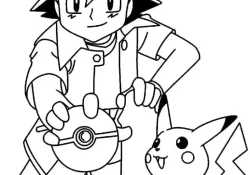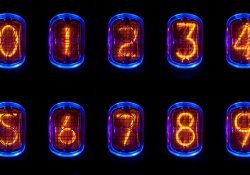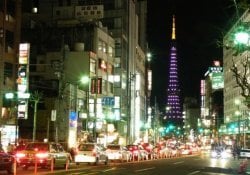The へ, に and で particles have big differences, but sometimes it can be difficult to know which one to use. In this article, we will see some examples and occasions for this doubt to be explained.
Índice de Conteúdo
particle へ
The particle へ(e) is used to indicate the direction of an action, similar to the Portuguese “para”. It is also used to indicate the person (or thing) to whom the action is directed.
Vou a escola
学校へ行きます
gakkō he ikimasu
Vou para o segundo andar
2階へ行きます
nikai e ikimasu
Remembering that "pode ser," "vou," "ir," and "vamos" can be used depending on the context of the conversation.
particle に
The particle に (ni) has many different grammatical functions, with it is possible to indicate existence, location, destination, direction of an action, space of time and many other things.
Há peixes no mar
海に魚がいます。
Umi ni sakana ga imasu
Vir até a minha casa
うちに来る。
uchi ni kuru
Mostrar para a policia
警察に見せます。
Keisatsu ni misemasu
Particle で
Em japonês, a partícula "で" (de) é usada para indicar o local onde uma ação ocorre ou com o que a ação é feita. Ela é frequentemente usada em conjunto com substantivos para fornecer mais informações sobre a situação em que uma ação acontece. Aqui estão alguns exemplos para ilustrar melhor seu uso:
Estudo na escola
学校で勉強する。
gakkō de benkyō suru
Vamos ir de trem
電車で行きます。
densha de ikimasu
Vamos dormir no futon
ふとんで寝ます。
futon de nemasu
The article is still halfway through, but we recommend also reading:
へ (e) - to に (ni) - at, in, to
There are some situations where both particles have the same meaning in the sentence, both are used to indicate destination or direction. On occasions like this, either of the 2 can be used, it will be correct and it will have the same meaning. Examples:
- 家に帰ります。 (uchi ni kaerimasu)
- 家へ帰ります。(uchi e kaerimasu)
Both phrases are correct and means: “to return (return) home”. But in situations like welcoming someone somewhere it is better to use the へ particle.
Frase: Bem-vindo ao Japão
日本へようこそ。
Nihon e Yokoso.
These two particles are used to express a direction, but the に particle is more specific than the へ particle. While に (ni) defines a precise location, the particle へ (E) defines yet another area. Example:
Eu vou para a minha empresa
私は会社に行きます。
watashi wa kaisha ni ikimasu.
Eu irei para o Japão no próximo ano
私は来年日本へ行きます
watashi wa Rainen nihon e ikimasu.
To further simplify the situation, we should keep in mind that "へ" indicates direction and "に" indicates destination. And that the particle "に" emphasizes the location while the particle "へ" emphasizes movement or direction.
に and で are both Japanese particles that indicate location or time in a sentence に is often used to indicate the destination of an action, while で is often used to indicate the location where an action takes place
The Japanese particle へ (he) and the particle に (ni) have similar functions but are used in different contexts.
The particle へ (he) is used to indicate movement or direction. For example:
I'm going to Tokyo
東京へ行きます。
I go to Tokyo.
I am going to the cinema.
映画館へ行きます。
I go to the cinema
The particle に (ni) is used to indicate place or time. For example:
We will meet tomorrow
明日に会いましょう。
Ashita ni aimashō.
I will meet a friend
友達に会いに行きます。
Tomodachi ni ai ni ikimasu
In addition, the particle に (ni) is also used to indicate means or goal. For example:
I'm going by car.
車に乗ります。
Kuruma ni norimasu
I'm going by bus
バスに乗ります。
Basu ni norimasu
Both particles are used to indicate a place. But the particle で is used together with an action verb. Already the particles no or and are used together with a verb of direction.
eat in the park
公園で食べる。
kouen de taberu
go to the park
公園に行く。
kouen ni iku
Of course there will be identical phrases, you have to decide which of the particles to use. See the sentence below:
- ベッドに横たわる。
- ベッドで横たわる。
- Beddo _ Yokotawaru;
Both phrases mean to lie down in bed. What's the difference? When you focus on the action (sleep) you use で (de), when you focus on the place where you are going to sleep, you use に (ni).
So there is no reason to confuse the use of the particle, just remember that the に particle indicates the location or when an action is performed in a certain direction. And that the particle で indicate the place where some action takes place. And the へ particle indicates the movement or direction. I hope this article has helped you and clear your doubts, enjoy and leave your comments and example sentences to help readers.







